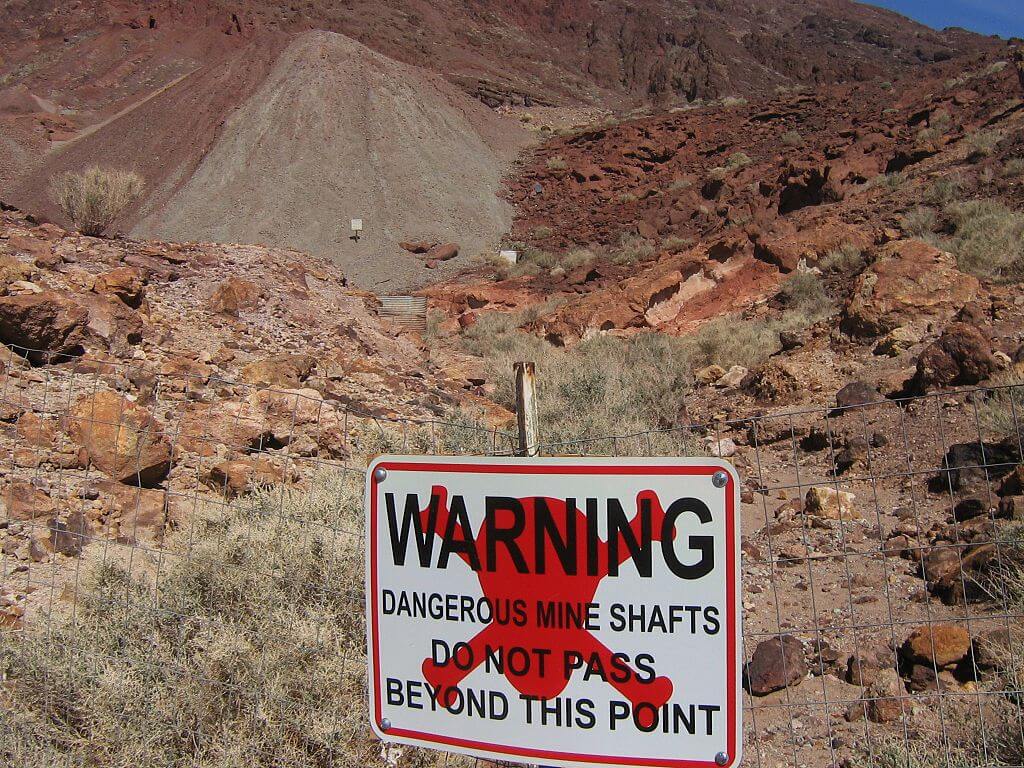Underground mines are inherently dangerous environments considering both illness and accidents there are around one million work related deaths around the world every year. The mining industry takes safety very seriously with an aspiration goal of zero fatalities. The safety of workers must always be of primary importance in any mining activity. Hazards in underground mining can be effectively managed to allow operations to be carried out with acceptable safety but there are many things to consider. In the topic we will look at the safety issues related to underground mining and how these are addressed.There are major safety risks associated with underground mining related to operational and technical aspects and these include; risks due to poor visibility, risks associated with dust and gas, operation of machinery in confined spaces, electrical danger and technical aspects including rockfall and water inrush. Poor visibility in underground mines can arise due to darkness, short lines of sight and dust concentration. Mines are full of sharp blind corners and being an echo environment sound cannot be relied upon to tell where machinery is operating or the direction in which it is moving. Poor visibility risks can be managed by establishing and following well designed operational procedures to minimize conflicting activities and by optimizing the use of high visibility for workers and machinery. Dust is generated by all mining operations from activities including cutting, drilling, blasting, transport and crushing. When air containing dust is breathe the larger inspirable particles are mostly trapped by the mouth and nose but if the smaller respirable particles find there way into the lung and retain this can lead to lung disease.Dust generation can be suppressed by the use of water spray as well as cutting and dust hazards can be minimized by the use of good ventilation if necessary implementing scrubbers as we discussed in the previous topic. Coal dust particles are especially dangerous because they can create an explosion in an underground mine.
The prevention of explosions in underground mines must always be a high priority. At high enough temperature which is actually quite low, coal dust particles will actually spontaneously com-bust, they are small and they can bust quickly and if there are enough coal dust particles close enough together they can lead to a chain erection of combustion and ultimately lead to an explosion.
The ventilation system in a mine help reduce explosion hazards by keeping the temperatures lower and removing dusty air.In coal mines even the build up of dust on surfaces is undesirable since it promotes combustion and the dust can be blown into the air during explosion actually making it worse. Several areas of control should be used each of which could reduce the severity and likelihood of dust explosions. These include; minimizing coal dust production, prevention of coal dust accumulation for example, by dust scrubbing systems or washing down surfaces and dilution of coal dust with sprayed rock dust. This picture shows a miner spraying rock dust to reduce the combustible fraction of coal dust in the air. Operating heavy equipment in underground mines is inherently dangerous as confined spaces carry a greatly increases risk of miners being crushed between moving machinery and rock surfaces. Combined with poor visibility this poses a major hazard to individual miners in the underground environment.
Underground miners should be properly trained for working in a confined space with all all of the required safety gears. In so far as is possible underground miners should be separated from digging machinery. Confined space is also concentrate sounds so hearing protection is essential.Most miners rely heavily on powerful electrical machinery which must operate in what is often a wet environment. Most of this machinery is rubber tied and so it’s not naturally earth.
Hazards include electrocution from fall to a damage machinery or from supply carried out in confined spaces. Risks include; shocks and burns they can be electrocution resulting in death or injury and asphyxiation from fires caused by the malfunction of electrical equipment. Electrical safety is even more important in coal mines where sparks can ignite gases. In the previous topic, we learned that combustible gases such as methane occur in significant quantities and earlier in the this topic we learned that coal dust is combustible and potentially explosive. Sparks in coal mines must be prevented. For safe mining conditions; electrical devices in underground coal mines must meet the strictest safety conditions.
These include; the design of every electrical component to be spark proof, so as not to ignite gas, encasement of any powered device capable of sparking in “flameproof” boxes, limits on the operating temperature of electrical equipment to 150 degrees so as not to initiate the combustion of coal particles and sophisticated earth leakage measures to protect against cut cables. To do with safety in underground mines standards and codes of practice have been developed which must be strictly followed. To support these agencies are appointed by industry and government to regulate an audit mine safety. Basic good practice includes; intensive safety training from basics to specifics and careful tracking of everyone who enters the mine, ensuring all miners receive, carry and use the correct protective clothing and gear. In addition to the usual industry equipment these also includes lights, respirators and gas detention equipment.
Proper labelling of sources of danger such as electrical wires. Standard operating procedures, work procedures and risks assessment for all activities ensuring adequate ventilation in the mine, effective instillation, use and knowledge of different types of fire extinguishers, use of effective communication tools while working deep underground and proper training on mine operations and evacuation procedures. This topic can only touch on the many aspects of mines safety. However, safety is arguably the most important aspect of mining engineering as to that a safe working environment mining could not take place.
